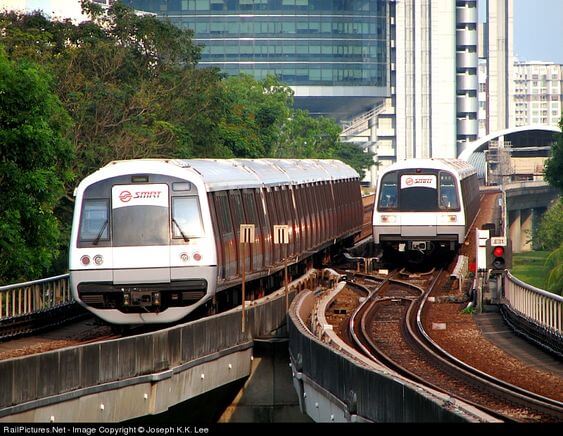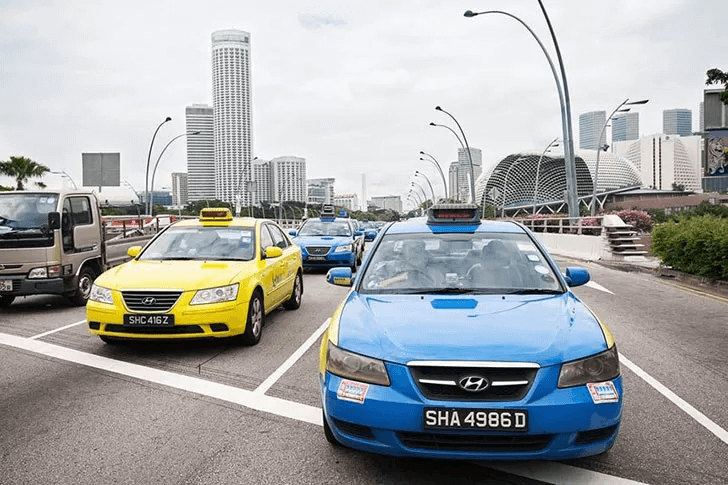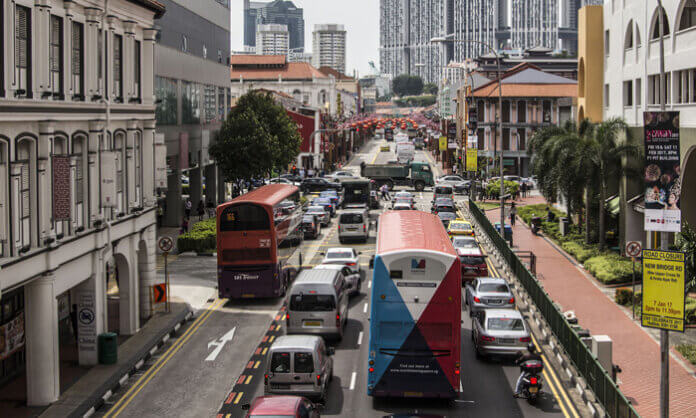Planning a trip to Singapore? Learn All There Is to Know About Lion City’s Subway System Right Here!
Taxis, local buses (which have some of the nicest views), and the Mass Rapid Transit (MRT) system are all part of Singapore’s public transportation system.
The modern visitor can have a fairytale holiday in Singapore, what with strolling around Gardens by the Bay, riding the Singapore Flyer (one of the world’s largest observation wheels), and shopping till they drop at any of the city’s numerous malls. The naive traveler is frequently taken aback by the apparently intricate public transportation system of an unfamiliar city, despite the abundance of attractions. You need not worry; Singapore’s public transportation system makes it easy to navigate the city and capture its innumerable treasures.
If you want to experience Singapore like a local, go on the MRT (Mass Rapid Transit) trains or hop on one of the buses that pass by some of the most beautiful spots. If you’re not satisfied, you may always ask for a cab or hire a bike. Regardless of your preferred means of transportation, Singapore offers delightful pauses and healthy destinations.
Modes of public transportation in Singapore
Cultural diversity is nothing new in the Lion City. Singapore is filled to the brim with adventures, from famed hawker centers serving lip-smacking regional delights to Universal Studios, which is high on the bucket list of every adventure junkie.
Here is a compilation of all the public transportation options in Singapore.
1. Railroads
Try out the reliable Mass Rapid Transit (MRT) and Light Rapid Transit (LRT) trains first. In addition to being very convenient, the train network also saves a lot of time and money.
With a 150-kilometer track connecting around 90 key stations, you’ll never be more than a few steps away from the station, no matter where you’re going. Be cautious not to board one of these trains between 7 and 9 in the morning or 5 and 7 in the evening, even if they run every 2 to 5 minutes during non-peak hours.

2. Vehicles
Alternatively, you can take a bus tour of the city and all its amazing sights. These buses are inexpensive, well-connected, and run every fifteen to twenty minutes. Not only that, but they have air conditioning and a ramp for wheelchair users. Keep an eye out for the SBS Transit buses, which are white and red, and the SMRT buses, which are bright yellow, if you’re set on taking the bus. The hours they operate from are 5.20 am to 12:00 midnight, and they are very easy to use! And what’s more? Children under the height of 0.9 m who are accompanied by an adult paying the fare can ride the bus for free.
After midnight, you might find operators like Night Rider and NiteOwl, but their prolonged working hours make them more expensive.

3. Taxis
We suggest grabbing a cab and speeding past the busy metropolis while listening to the local radio if you’re ready to spend a little more on legroom and comfort. Curious about the booking process? You can reach the cab operator by dialing the Dial-A-Cab hotline number, which is 6342 5222.
Singapore does not have any ridesharing applications like Uber or Lyft. On the other hand, local tourists highly recommend Ryde, ComfortDelGro, and Grab.

4. Aerial vehicles
Whoever claimed riding the bus couldn’t be entertaining was mistaken. Take advantage of Singapore’s convenient cable car system to go about the city while taking in breathtaking ocean views, parks, and modern architecture.
The Cable Car Sky Network operates these magical, vintage cable vehicles. Two separate lines make up this gondola lift. One goes from the Mount Faber station to Sentosa, and the other goes from Siloso Point to Merlion. Each ticket is distributed at the end of the first strip, which begins at 8.45 am and ends at 9.15 pm.
Singapore Cable Car has announced the launch of limited-edition Poké Ball cable cars, which will be available exclusively from May 1, 2023, through September 30, 2023. Thus, this could be an ideal moment to organize a vacation to Singapore if you or your loved ones are avid Pokémon fans.

Cost, routes, and applications for Singapore’s local transportation
The first step in taking public transportation in Singapore is to buy a Singapore Tourist Pass (STP) at the SimplyGo Ticket Offices located at certain MRT stations. You can buy a pass that allows you unlimited rides on these buses and trains for one, two, or three days.
There are three different passes available: one day costs SGD 22 (INR 1,340.25), two days cost SGD 29 (INR 1,766.69), and three days cost SGD 34 (INR 2,071.29). In addition, a non-refundable deposit of SGD 10 (609.20) is required when buying these tourist passes.
For unlimited travel on basic bus services, MRT and LRT days, and more, tourists can opt for the SG Tourist Pass, a special EZ-Link card. The pass, which costs SGD 29 (INR 1,766.69) and is valid for three days, does not require a deposit, though. Singapore Tourist Pass Plus, which allows you to save a ton of money while still enjoying all the city has to offer, is available for an additional SGD 48 (INR 2,924.18) for three days (no deposit required).
Finally, the Singapore Tourist Pass Charm is a great choice if you prefer little souvenirs that encapsulate a city’s memories. With its lion-themed charm-cum-pass, you can hop on any of Singapore’s basic buses, MRT trains, and LRT trains without limits. It costs SGD 36.90 (INR 2,247.96) and is good for one day.
Entering your starting and ending points into Singapore’s public transport app Moovit quickly retrieves bus routes and railway lines, making your journey easy. For example, you wish to travel from Gardens by the Bay to Sentosa Merlion. Enter the corresponding points, and that’s it! Walking and cycling trails, as well as the shortest routes and recommended lines, are at your fingertips. Ain’t no one going to love it?
To sum up, learning about Singapore’s public transportation system is a breeze. The Moovit app is a lifesaver when taking public transportation.
FAQs
How can I make a payment for the Singaporean public bus system?
Several different types of payment cards are accepted, including the Singapore Tourist Pass (STP), contactless bank cards, SimplyGo EZ-Lnk, NETS Prepaid, NETS FlashPay, SimplyGO Concession, and Concession Cards. If you choose to pay with cash, which is an option exclusively for bus travels, the fare can be higher.
1. Could you please tell me when the busiest and least busy times are for public transit in Singapore?
Singaporean public transportation is at its busiest between 7 and 9 in the morning and 5 and 7 in the evening.
2. Are ride-sharing apps like Grab and Uber available in Singapore?
Even if Uber isn’t available in Singapore, other reliable apps such as Grab, ComfortDelGro, and Ryde are always there for you.
3. Do Singaporean drivers expect tips?
Taxi drivers, tour guides, and hotel workers in Singapore may not expect tips, but a little goes a long way. A word of caution, though: Changi Airport employees are not authorized to collect gratuities. So, please don’t tip them.
4. Is wheelchair accessibility a concern for Singapore’s public transportation system?
In addition to other essential accommodations, the trains and buses do have ramps that can accommodate wheelchair passengers.
5. Can I bring strollers and other large bags onto public transit without being charged extra?
The MRT trains and stations are luggage-friendly. The public transportation system, however, does not have this feature.
6. What is the frequency and reliability of Singapore’s public transportation?
You can trust Singapore’s public transit system 100% of the time. The bus service runs every fifteen to twenty minutes, and the MRT and LRT trains operate every two to five minutes.




